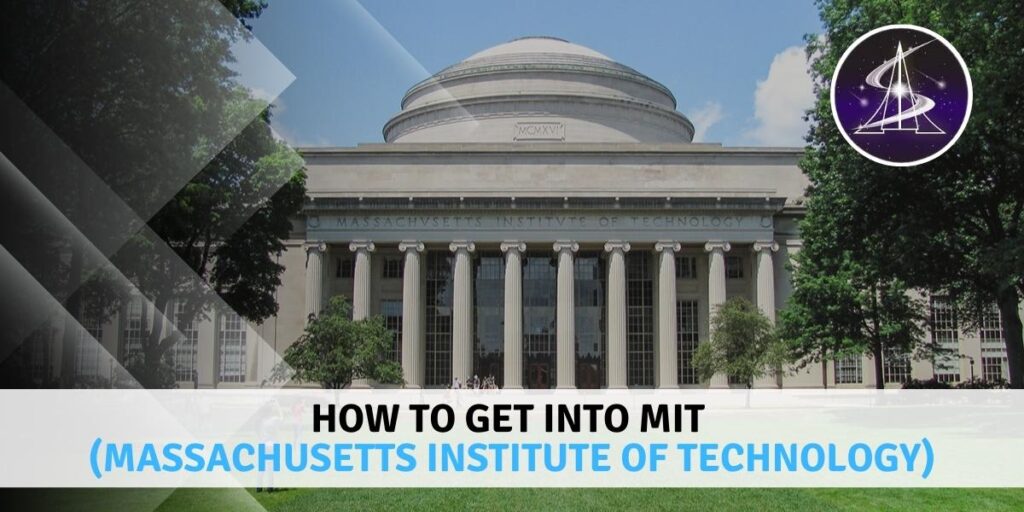Do you dream of getting admission to the world’s top-ranked institute, MIT? As high school students, many Indian students dream of doing their higher education in foreign countries. With a 4.1% acceptance rate, it is a tough game to get into MIT. Though this rate is way lower than the acceptance rates of IITs, you’ll need to make sure your application, grades, recommendations, and essays are up to snuff.
This blog will cover the following topics:
- Why MIT?
- MIT as Undergrad
- MIT as grad
- MIT as Researcher
Why MIT?
MIT provides high-quality education and research facilities. Indian students who want a great education often choose MIT because it has cutting-edge research and professors who are known all over the world. India is a hub for engineering and technology, and MIT is well-known for its strong engineering and technology programs. Indian students who are interested in pursuing a career in these fields often choose MIT to gain a deeper understanding of the latest advancements and to network with experts in the field.
While MIT is known for its science and maths programs, they also offer many other exceptional degrees and certifications. MIT has five schools: Architecture and Planning, Engineering, Humanities, Arts, and Social Sciences, Management, and Science. These schools have 46 departmental programs. Most students from developing nations, like India, cannot afford to pay the full fees at MIT. Consequently, MIT provides generous financial aid packages, which may include scholarships, grants, and work-study opportunities. MIT delivers an excellent experience in a multicultural learning environment, and students who want to expand their horizons often choose MIT to connect with people from different cultures and backgrounds.
MIT as Undergrad:
MIT permits early applications from students. That means that you can apply to MIT and receive notification of your acceptance months before other students, but you don’t have to commit to MIT if you’re accepted. Statistics about getting into MIT show that students who apply early have a pretty big advantage over those who apply at the regular deadline. Early applications usually start two-three months before the regular ones.
MIT’s undergraduate application fee is $75 (Rs. 6217). To complete the MIT application, you need to submit the following:
-
SAT(Scholastic Assessment Test) or ACT(American College Testing) scores :-
A SAT score above 1500 out of 1600 is considered good and will put you in a good position to get into MIT. While a score of 34 or above on the ACT is considered good. But don’t worry; these tests are far easier than JEE Mains or NEET. In India, these tests are conducted 3–4 times a year, and you can give multiple tests. The test with the highest score is considered. The test syllabus includes evidence reading, writing, maths, science, language, history, and English.
Since English is not our native language, it is encouraged (but not required) to submit scores from an English proficiency exam (e.g., IELTS, TOEFL, etc.).
-
Four short essays:-
You’ll need to answer four short questions (roughly in 200 words) on various aspects of your life: your background, what field you’re interested in, your hobbies, other activities like how you contribute to your community, and a challenge that you have faced in your life. These answers help MIT get to know you as a person. Remember, MIT already has excellent robots and AI. They want talented and capable young people, not robots, to take admissions.
-
Two letters of recommendation:-
You need to submit two LORs. One from a math or science teacher and one from a humanities, social science, or language teacher. A good letter of recommendation will give specific examples of your academic and personal skills and explain why you would be a great candidate for MIT.
-
Your high school transcript:-
You need to submit your grades. Even though MIT doesn’t have a minimum GPA requirement and doesn’t say what the average GPA of accepted applicants is, having good grades is very important. Moreover, having good grades doesn’t guarantee your admission. It would be very beneficial if you had qualified for some Olympiads, won some national or international competitions, or done some projects. It is very rare to see a candidate selected without having qualified for any olympiad.
The admissions process at MIT is different from that at IIT in many aspects. Unlike IITs and other premier colleges in India, you need to be good at other things as well to get into MIT. You must develop skills other than academics too. Instead of trying twenty different activities, pick the one that’s the most special to you and give it everything you have. Don’t strive to be above average at a lot of things—be excellent at one.
MIT as Grad:
Admission to MIT for a graduate program is an entirely different process than admission for an undergraduate degree. It requires mastery of the field you want to enter. You need to show that you have completely maxed out your resources for a subject matter, and the only way to progress any further is through attending MIT.
Your grades in the core subjects should be perfect. Main attention is given to math, physics, and chemistry (based on your major) since they show your technical expertise. A minimum score of 100 is expected in TOEFL for your English proficiency. Some departments, like the Electrical Engineering and Computer Science Department (EECS), don’t expect GRE (Graduate Record Examination) scores, while others do. The GRE at the graduate level is equivalent to the SAT at the undergraduate level.
Apart from these quantitative factors, LORs and SOPs (statements of purpose) play a huge role. Colleges, understandably, want to know what motivated you to devote two years of your life to pursuing a specific degree. Experience gained through internships, research projects, or simply an independent project significantly contributes to your SOP. If you have published papers, that’s an incentive but doesn’t guarantee admission.
The application fee is $75. You need to select the department you want to apply under. No two departments at MIT are precisely alike; hence, there is no single application deadline. However, there are general timeframes that most departments follow:
- September- Online application becomes available
- December/January- Deadline to submit the application
- February/March- The application is reviewed
Even still, MIT can reject you even if you seem fully qualified. There have been instances where applicants who had published in journals like Nature were waitlisted by MIT. So getting into MIT doesn’t determine your success or aptitude for research. MIT just provides the best opportunities, but this doesn’t mean that you can’t get those opportunities elsewhere if you work hard and with determinism.
MIT as Researcher:
MIT provides world-class research facilities. The admission process for PhD at MIT is almost the same as for graduate students. Additionally, you should directly correspond with a Professor at MIT who is very active in his/her research area, which also interests you. For that, you should read his research papers published in research journals, understand them and initiate correspondence with the Professor by way of showing your interest in his area of research. If he/she is convinced that you can contribute by joining him /her in helping to solve the research problem, then you have a 90 per cent chance of getting a research fellowship and admission to PhD programme at MIT.
Conclusion:
So you now understand why getting into MIT is worthwhile and how the admissions process works. Check out our other blogs to learn more about other universities around the world and how to get into them.
About us – At SciAstra, we guide students who want to become scientists and pursue research by helping them secure admissions in the top colleges for the same like IISER, NISER, CEBS, ICAR, CMI, etc.
Our mentors are from the top research institutes like IISER, NISER, IACS, CMI, ISI, IISC Bangalore, and so on. If you are looking to prepare for IAT / NEST 2023, you can check out our courses and get access to live classes, recorded lectures, study material, mock tests, doubt-clearing classes, and much more!
To know more about us, click here OR download the SciAstra App from Play Store!





Pingback: Opportunities After IISER: Packages, Placements, PhD?